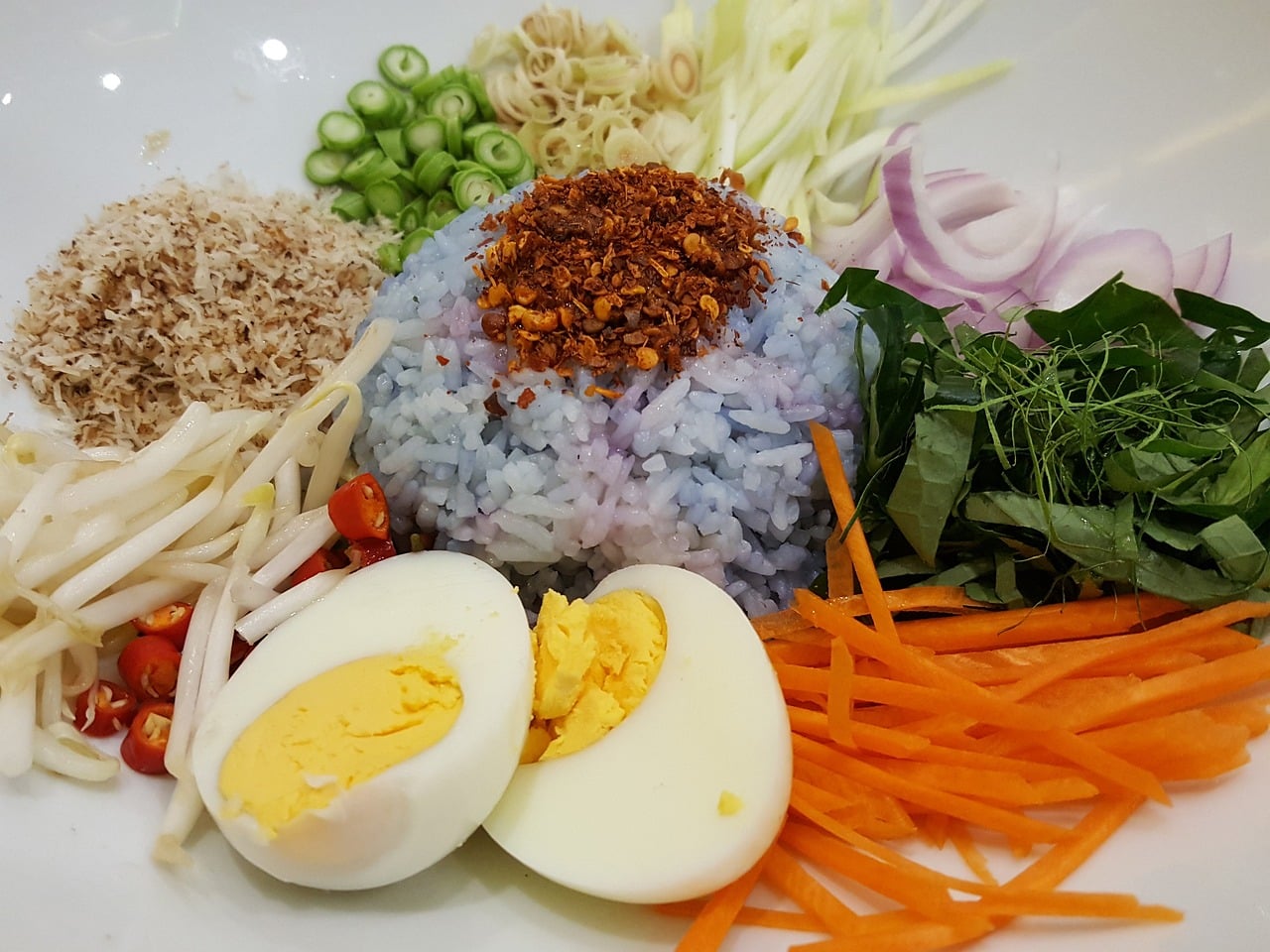Thai cuisine: balancing flavors and health

Thai cuisine is famed worldwide for its bold, vibrant flavors that tantalize the palate. With an exquisite balance of sweet, sour, salty, and spicy, it’s a gastronomic adventure that tickles the taste buds. But aside from its flavor complexity, Thai cuisine also stands as a testament to a healthy and balanced diet. With its reliance on fresh ingredients and minimal use of oils, it contributes to a nutritious lifestyle that maintains the well-being of its patrons. So, let’s dive into the world of Thai cuisine, exploring how it strikes the perfect balance between flavor and health.
The Art of Thai Cuisine
When you think of Thai cuisine, your mind likely conjures up images of mouth-watering dishes such as pad Thai, green curry, or tom yum soup. These dishes are not just delicious but are also a reflection of the Thai culture and philosophy.
A découvrir également : Cooking with organic and local ingredients
Thai cuisine is, in essence, a culinary art form. Each dish is meticulously crafted to deliver an explosion of flavors. But it’s not just about the taste. The visually pleasing presentation and aroma are just as important in Thai cuisine. It’s a multi-sensory experience that appeals to your sight, smell, and taste.
The secret behind the distinctive taste of Thai food is the harmonious blend of four fundamental tastes: sweet, sour, salty, and spicy. This balance of flavors is a reflection of the Thai philosophy of the middle way or moderation in everything.
Avez-vous vu cela : Techniques to grill like a pro
The Health Aspect of Thai Cuisine
Apart from its rich and bold flavors, Thai cuisine is also recognized for its health benefits. The focus on fresh ingredients, herbs and spices not only adds to the flavor but also boosts the nutritional value of the dishes.
Thai cuisine is mostly plant-based, featuring a variety of vegetables, herbs, and spices. The abundance of vegetables ensures a high fiber content, promoting digestive health. Herbs and spices such as turmeric, lemongrass, and galangal used in Thai cuisine are known for their anti-inflammatory and antioxidant properties.
Thai dishes are also low in fat as they use minimal oil. The primary source of fat comes from healthy sources such as coconut milk and nuts. Protein is derived from lean sources like chicken, fish, and tofu.
Mentioning ‘Thai cuisine’ and ‘spicy’ in the same sentence might seem inevitable. Not only does the spiciness add a kick, but chillies have health benefits too. They contain capsaicin, which is known to aid weight loss, relieve pain, and improve cardiovascular health.
Thai Cuisine: A Flavorful Journey
With Thai cuisine, every meal becomes an adventure. Whether it’s savoring the tangy and spicy notes of a tom yum soup or the sweet and savory flavors of a pad Thai, every dish is a feast for the senses.
One of the most popular dishes, pad Thai, is a perfect example of the balance of flavors. The noodles are stir-fried with tamarind sauce, making it both sweet and sour. The addition of peanuts adds a salty and crunchy element, while chillies provide a spicy kick. Likewise, in green curry, the sweetness of coconut milk balances the spiciness of green chillies, while lime leaves and lemongrass contribute a sour note.
But it’s not just about these famous dishes. Thai cuisine offers a plethora of lesser-known dishes that are equally flavorful and healthy. For instance, som tam, a green papaya salad, is a refreshing blend of tangy, sweet, and spicy flavors, packed with vitamins and minerals.
The Role of Thai Cuisine in Promoting Health
The nutritional benefits of Thai cuisine have profound implications for health. Despite the flavorful indulgence, Thai cuisine can help maintain a healthy weight due to its low-fat content and high amount of vegetables. The spices like turmeric and galangal are known to help fight inflammation and boost immunity.
The use of fresh ingredients ensures that the dishes are packed with essential vitamins and minerals. The liberal use of herbs and spices also means the cuisine is high in antioxidants, protecting the body against oxidative stress.
For those with dietary restrictions, Thai cuisine offers a range of gluten-free and vegan options. The use of rice noodles and soy sauce makes most Thai dishes gluten-free, while tofu and vegetables are prominent in vegan Thai cuisine.
Thai Cuisine: A Symphony of Flavors and Health
In essence, Thai cuisine can be described as a symphony of flavors and health. It’s not just about the food but the experience. It’s about the joy of discovering new flavors, the satisfaction of eating a well-balanced meal, and the comfort of knowing that what you’re eating is good for your health.
So, the next time you’re savoring a bowl of green curry or a plate of pad Thai, remember that you’re not just enjoying a delicious meal but also participating in a culinary tradition that upholds both taste and health.
Exploring Lesser-Known Healthy Thai Dishes
Thai cuisine is not just about the globally recognized, mouth-watering dishes like pad Thai or green curry. There are numerous lesser-known dishes that offer a tantalizing blend of flavors while catering to your health needs. Let’s uncover some of these hidden culinary gems in Thai cuisine.
One such dish is Laab, a type of salad made from minced meat, lime juice, fish sauce, and a generous amount of herbs. Laab is high in protein and packed with the goodness of fresh herbs, making it a healthy choice.
Another healthy dish is Yam Nua, a spicy beef salad that is a feast for the taste buds and a boon for your health. It is made from grilled lean beef, onions, lemongrass, and chillies. The dish is rich in protein and beneficial plant compounds from herbs and spices.
For seafood lovers, Pla Goong is a must-try. It is a spicy prawn salad flavored with lemongrass, lime juice, and fresh herbs. Low in calories yet high in protein and omega-3 fatty acids, Pla Goong is both delicious and nutritious.
These dishes may not be as famous as their counterparts, but they are equally delectable and offer a range of health benefits. So, the next time you are at a Thai restaurant or cooking Thai food at home, give these dishes a try for a change.
Conclusion: Embracing Thai Cuisine for Flavor and Health
In conclusion, Thai cuisine is a treasure trove of vibrant, bold flavors that are skillfully balanced in each dish. But more than that, it is a cuisine that values health and well-being, maintaining a delicate balance between taste and nutrition.
With its focus on fresh ingredients, minimal use of oil, and plethora of herbs and spices, Thai cuisine is a nutritious option that doesn’t compromise on taste. Whether it’s globally famous dishes like pad Thai and green curry or lesser-known gems like Laab and Pla Goong, there is a wealth of healthy, flavorful options to explore in Thai cuisine.
Moreover, the Thai philosophy of moderation reflects in their culinary practices, promoting a well-rounded diet. From the liberal use of vegetables to the controlled use of fats, Thai cuisine provides a dietary blueprint that is both fulfilling and wholesome.
In a world where fast food is often the go-to option, Thai cuisine serves as a refreshing change. It offers a gastronomic adventure that is not only pleasing to the palate but also supportive of good health. So, embrace Thai cuisine, relish its unique flavors, and reap the health benefits it offers. In doing so, you are not just enjoying a meal; you are participating in a culinary tradition that values balance, harmony, and well-being.
